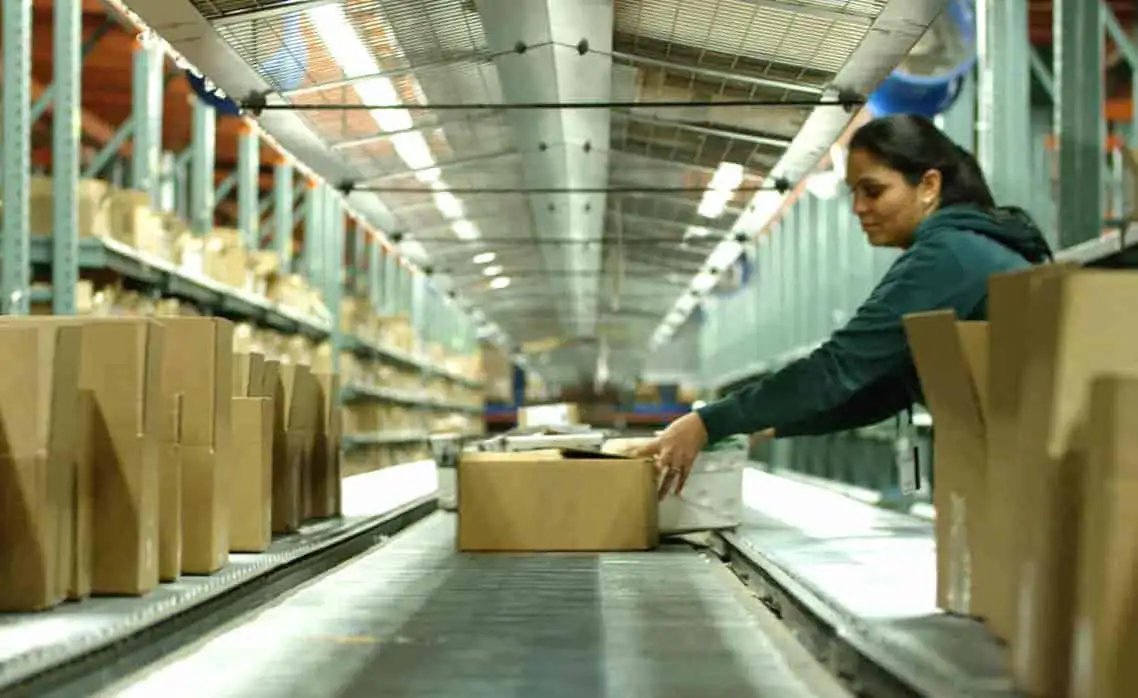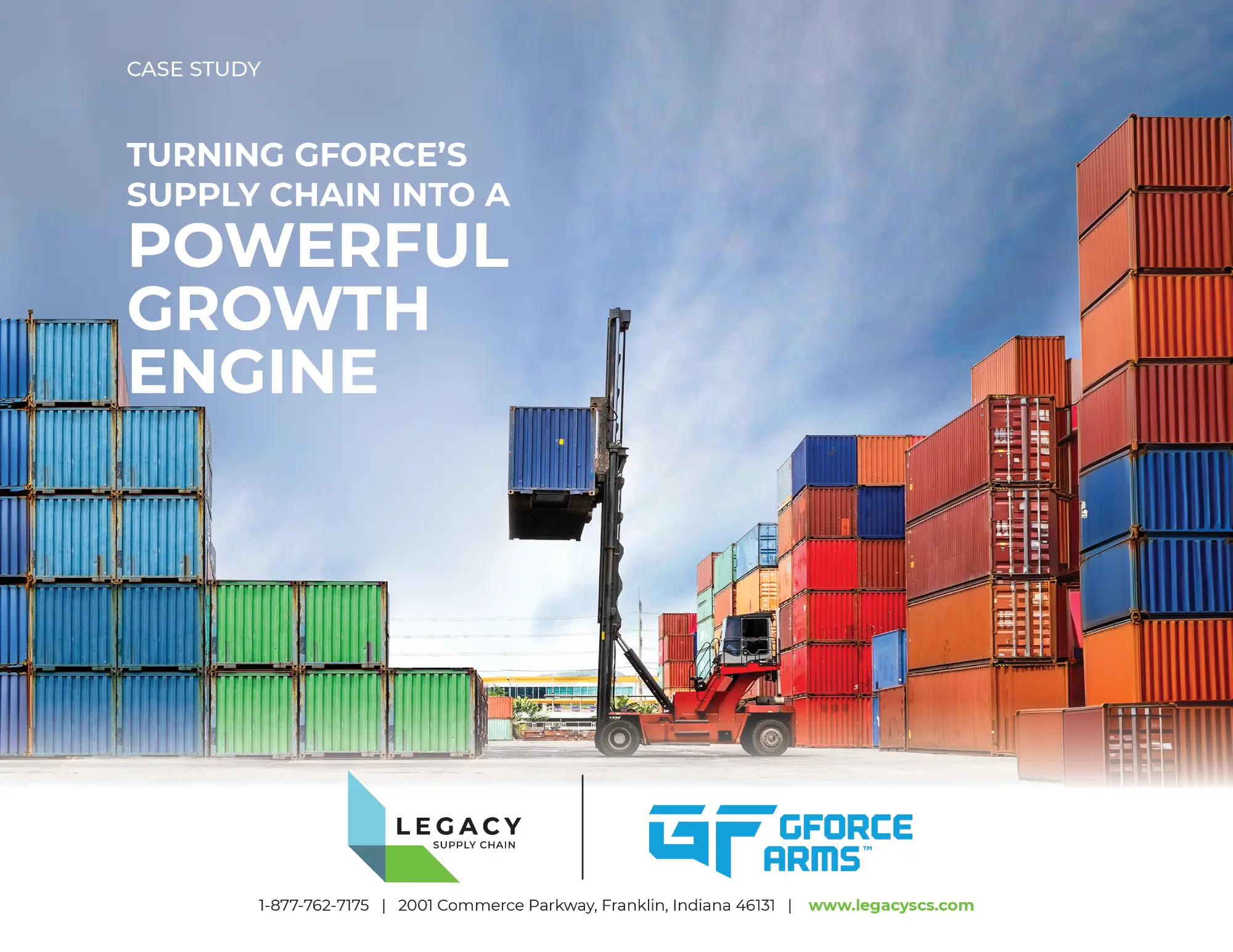Intermodal Transportation Guide
Move More for Less: The Power of Intermodal Transportation
Supply chains face growing pressure to stay adaptable and build a freight network that shifts modes while balancing resilience, speed, and sustainability. Intermodal transportation helps make that happen. It’s a practical way to move freight cost-effectively over long distances.
If you’re a shipper looking to optimize freight performance across long hauls, intermodal transportation may be the perfect arrow in your quiver. Under the right conditions, moving freight between rail and truck can reduce the impact of volatile fuel prices and truckload capacity crunches.
In this guide, we’ll unpack the full picture: what intermodal transportation is, how it works, why it matters, and how to build the right solution for your business.
What Is Intermodal Transportation?
Intermodal transportation is the movement of freight using two or more modes of transportation, typically rail and truck, under a single, continuous shipment plan.
Cargo remains in the same container from origin to destination, dramatically reducing handling and minimizing time spent at transfer points or in reloading operations. This containerized tactic allows businesses to ship goods across long distances while capitalizing on the efficiency of rail and the flexibility of truckload.
How Intermodal Transportation Works: One Container, Multiple Modes
The intermodal process begins like any other shipment—with freight packed and ready to move. But from there, the journey becomes a coordinated sequence of modal transitions, each designed to maximize efficiency and minimize touchpoints.
The containerized freight is first loaded onto a truck at the shipper’s facility, whether that’s a distribution center, warehouse, manufacturing site, or port. From there, a local drayage carrier transports it to a nearby railyard. Once loaded via crane or top pick onto a train, the container travels securely sealed and untouched. Upon arrival at a receiving ramp, a second drayage provider picks it up and delivers it to its next destination or receiving facility. Throughout this process, the cargo never leaves its original container.
This seamless movement not only reduces the risk of damage or theft but also creates scheduling consistency and improves transit visibility. At its best, intermodal logistics transforms a complex, multi-leg trip into a single, unified journey.
Benefits of Intermodal Transportation
Fuel price volatility, driver shortages, sustainability targets, and tighter delivery expectations have raised the stakes for supply chain performance. Rail, as a backbone of the intermodal model, provides significant savings, often reducing transportation costs compared to truckload for long-haul moves.
But rail is also inherently more sustainable, and has been shown to be as much as seven times more energy efficient than trucking when it comes to greenhouse gas emissions. Over long journeys, trains are more fuel and energy efficient than trucks. For companies with ESG targets or carbon accounting commitments, rail offers the benefit of emissions reduction.
Capacity is another draw. When truckload markets tighten and lanes become unpredictable, rail offers scalable volume and consistent scheduling. And with less handling and fewer touchpoints, shipments are less prone to damage or delay.
Intermodal is about creating options. It gives shippers the ability to balance service level expectations with cost and sustainability goals, without sacrificing reliability.
When to Use Intermodal Transport
Intermodal transportation isn’t right for every shipment. It’s best suited for freight moving more than 500 miles, particularly along high-volume lanes where transit schedules can be planned and repeated.
If your network includes consistent replenishment cycles, predictable production output, or routine deliveries to major metro areas, intermodal can unlock both cost and capacity efficiencies. It’s also ideal when service expectations allow for one to two extra transit days in exchange for lower costs and improved sustainability metrics.
Intermodal proves especially valuable in volatile markets when truckload rates spike, fuel surcharges climb, or driver shortages limit capacity. It offers a more stable, scalable solution that helps protect budgets and performance. For shippers aiming to hit emissions reduction targets, intermodal is also a strategic play, delivering significantly lower greenhouse gas emissions compared to over-the-road long distance trucking.
Intermodal Transportation vs Drayage
Drayage is a component of intermodal, not a replacement for it. Drayage refers specifically to the short-distance trucking legs at either end of a rail move, moving containers between warehouses and rail terminals or ports.
Intermodal, by contrast, is the full multimodal movement of freight (usually a combination of truck and rail) within a single, unified shipment plan. While drayage carriers are critical to intermodal success, they don’t manage the long-haul transport. Intermodal freight transport integrates these legs into a continuous process, giving you a unified, optimized solution.
In practice, drayage is a critical building block within the intermodal process. These local carriers provide the first-mile pickup and final-mile delivery, ensuring containers make it to and from the rail ramp. But drayage alone doesn’t manage the long haul. That’s what the intermodal network is for—coordinating equipment, scheduling rail departures, securing container space, and keeping the shipment moving across hundreds or thousands of miles.
Where drayage ends, intermodal begins. And when it’s all managed under one cohesive plan, shippers gain the advantage of reduced handoffs, fewer delays, and a streamlined process.
Planning and Preparing Intermodal Shipments
Intermodal transportation pays off when it’s planned well. Shippers need to account for ramp access, drayage lead times, and container availability. Start by understanding your shipment profile—how often you move goods, in what volume, to which markets, and on what timeline.
Ramp access is one of the first factors to consider. Proximity to a rail terminal can reduce drayage costs and improve scheduling reliability. Lead times also matter. Intermodal typically requires earlier booking and coordination than truckload, particularly when space and equipment are in high demand. And container availability varies by region, especially for 53’ domestic containers, making carrier relationships and forecasting critical.
That’s where the right logistics partner makes the difference. A well-connected provider will help you anticipate volume, optimize routes, secure rail space, and coordinate drayage, all while providing real-time tracking and milestone updates. The more integrated your planning process, the more consistent your intermodal performance.
Best Practices for Intermodal
For best results, shippers should:
- Plan shipments with a 24–72 hour lead time.
- Choose consistent lanes and volumes to leverage preferred pricing.
- Use 53’ domestic containers for optimal capacity.
- Ensure facilities have the proper equipment and space for container loading/unloading.
- Work with a logistics partner that integrates all legs of the journey.
By aligning expectations and improving communication between shipping, drayage, and rail teams, shippers can achieve better outcomes with every intermodal move.
Pricing and Cost Control
Intermodal delivers lower linehaul costs than full truckload, especially on consistent long-distance lanes. But pricing isn’t just about the rail leg. The total landed cost includes drayage, fuel surcharges, accessorials, and container usage fees. Legacy uses predictive cost modeling and volume forecasting to help shippers lock in rates and minimize budget surprises, keeping your spend predictable and under control.
Use Cases and Applications
Intermodal works best for optimizing both predictability and volume. For example:
- Retailers moving large quantities of product from coastal DCs to regional hubs.
- CPG brands replenishing stores with high-frequency lanes.
- Manufacturers shipping raw materials cross-country on a regular cadence.
Cross-border North American freight is another ripe application. Intermodal streamlines U.S./Mexico and U.S./Canada movements, providing integrated customs clearance and reducing delays at transfer points. For any business that moves large volumes over long distances and wants greater control over cost and performance, intermodal fits the bill.
Challenges and How to Solve Them
Of course, intermodal isn’t without its friction points. Proximity to rail ramps is one. Not every shipper is conveniently located near intermodal infrastructure. If drayage routing and ramp access are built into network design, something we do at Legacy, you avoid the pitfalls of fragmented planning, unexpected delays, and inefficient handoffs.
Transit time is another consideration. While rail isn’t always as fast as truckload, the trade-off in savings and reliability often makes it the better option for freight that isn’t time-critical. With the right planning and scheduling, the slower pace becomes an opportunity to reduce costs and add consistency.
Capacity variability can arise, especially during peak seasons. Easy access to national truck lines and Class I railroads, plus a flexible carrier network, gives you the freedom to adjust to market conditions. Monitor volume, plan capacity ahead, and integrate intermodal into your broader transportation strategy.
Visibility is also a frequent concern. Intermodal often involves disparate systems across carriers. Legacy’s tech stack solves for this with real-time tracking, milestone alerts, and full EDI integration, ensuring that your team sees what’s happening no matter where the freight is in transit.
The Role of Technology in Intermodal Freight Success
Today, technology is the connective tissue that turns rail and truck transportation modes into one fluid, intelligent system. For Legacy, that means every container is tracked from origin to destination using Tier 1 TMS platforms, automated milestone updates, and proactive exception management.
This isn’t just about visibility; it’s about foresight. When your logistics platform predicts delays, reroutes freight, and alerts your team before issues escalate, it gives you the time and control to act. That’s the power of combining high-tech infrastructure with the high-touch service Legacy is known for.
Whether you’re integrating EDI connections, building custom dashboards, or managing carrier scorecards, technology is critical for optimizing rail freight transport.
Choosing the Right Intermodal Partner
A strong intermodal partner offers capacity, yes, but they also bring visibility, flexibility, and operational discipline. They can design routing strategies that reduce handoffs and delays, coordinate first- and final-mile drayage, and integrate data across systems for real-time tracking and proactive updates.
Equally important is the partner’s ability to scale. As volumes grow or lanes shift, your provider should be able to adjust capacity without compromising service levels. That means a diverse carrier network and the ability to flex between asset-backed and brokered options.
Look for a provider that offers centralized platforms for booking, tracking, and performance reporting, so your teams can make faster, more informed decisions. And when issues arise (because they always do), responsiveness is key. The right partner resolves challenges quickly, communicates clearly, and stays aligned with your internal teams.
Ultimately, intermodal is about building a more resilient freight strategy. And that requires a provider who sees beyond the shipment—someone who operates as a supply chain engineer and an extension of your business.
Intermodal with Legacy SCS
Intermodal transportation is a key supply chain strategy for building agile and resilient supply chains. It creates space for growth and better delivery performance with on time and on budget shipments. By combining the strengths of rail and truck transport, intermodal helps you reduce costs and meet growing delivery expectations without sacrificing reliability.
Legacy SCS delivers exactly that. With a vast carrier network and logistics expertise, we design intermodal strategies that integrate seamlessly with your operations. From multimodal routing and container management to visibility and performance tracking, our team helps you optimize every mile—coast to coast and cross-border.
Get In Touch with a Legacy Expert Today
FAQs
Q: Is intermodal slower than truckload?
A: In some cases, yes. Intermodal isn’t built for emergency shipments. But when planned correctly, it offers predictable transit and fewer surprises. Most intermodal lanes operate on fixed rail schedules, which can help reduce variability compared to over-the-road delays.
Q: How far does freight need to move for intermodal to be cost-effective?
A: Generally, intermodal makes sense at 500+ miles, though it depends on the lane and available capacity. Dense lanes between major metro areas, like Chicago to Dallas or LA to Atlanta, typically offer the best value.
Q: Can I track my freight in real time?
A: Legacy’s transportation platform gives you full container visibility, milestone tracking, and exception alerts throughout the shipment. You can access tracking updates through a centralized dashboard or automated notifications.
Q: What if my site isn’t near a rail ramp?
A: That’s where our drayage coordination comes in. We connect first and final mile through our certified carrier network. Our team pre-books drayage to avoid delays and aligns schedules to reduce dwell time at the rail.
-
Legacy Achieves Platinum Status for Delivery Excellence From Amazon
When it comes to supply chain performance, the margin for error is razor thin. Customers expect orders to arrive quickly, accurately, and...
+ Read more -
IPS Corporation selects Legacy as 3PL Partner to drive Supply Chain Transformation
FRANKLIN, IN | September 10th, 2025 – Legacy SCS announced that it has been selected by IPS Corporation, a global leader in Water...
+ Read more -
How GForce Transformed Its Supply Chain Into a Powerful Growth Engine
When GForce Arms launched in 2020, the mission was simple but ambitious: deliver affordable, reliable firearms with the speed and...
+ Read more



